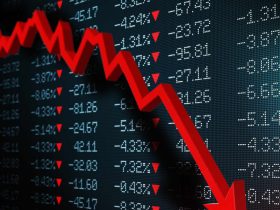Fall begins on Saturday, but you’d think it had arrived weeks ago if you shopped at
Target,
T.J. Maxx, or
Starbucks.
The retailers are tuned into the season, with Halloween knickknacks and home goods—and, of course, pumpkin-themed plastic cups. TikTok has noticed, chronicling shopping trips, a boon for sales—and perhaps for stocks.
For the past 50 years, from 1972 through 2022, shares of Target and
TJX,
the parent of T.J. Maxx and HomeGoods, have averaged gains of 3.2% and 3.9% from August to November, respectively, according to Dow Jones Market Data; from 1992 to 2022, Starbucks averaged a 10% pop. Over the past four years, foot traffic has climbed, too. Last year Target, T.J. Maxx, HomeGoods, and Starbucks saw traffic beat 2018’s by 21.5%, 2.5%, 8.3%, and 5.9%, respectively, according to Placer.ai data.
The bump in shoppers parallels the boom in TikTok’s popularity, which began around 2019. One seasonal trend is a white-ghost-shaped pillow and collection of ghost-patterned blankets found at HomeGoods and T.J. Maxx. Dozens of videos show the throws on couches and beds—and buyers on the hunt. With six weeks until Halloween, the hashtag “ghostblanket” got 55.5 million views.
For all the TikTok buzz, Target is off 24.4% and Starbucks is down 5.6%, though TJX is up 12% for 2023. Inflation persists, gas prices are up, and student-loan-repayments have resumed. Fall decor only goes so far.
Last Week
Markets
Another Fed week, with investors expecting policy makers to pause. Polled economists felt differently. The Fed faced an auto workers’ strike, the near-certainty of a government shutdown, and oil prices nearing $100 a barrel. Investors won: The Fed left rates alone—for now. Stocks dove as bond yields surged. On the week, the Dow industrials fell 1.89%, the S&P 500 lost 2.93%, and the Nasdaq Composite got whacked 3.62%.
Companies
The UAW widened its three-plant strike against
General Motors
and
Stellantis,
but spared Ford. The union representing Ford workers in Canada reached a tentative agreement. The Federal Trade Commission sued private-equity firm Welsh, Carson, Anderson & Stow over a roll-up of anesthesiology practices. The Securities and Exchange Commission voted to crack down on fund names that don’t reflect their holdings. Longtime News Corp and Fox Chairman Rupert Murdoch, 92, announced his retirement. His son, Lachlan Murdoch, succeeds him.
Deals
Maplebear, Instacart‘s parent, traded up 12% on its debut, then slid. A day later, digital marketer
Klaviyo
rose 23% but also fell back…The Wall Street Journal reported that
Goldman Sachs
was in talks to sell specialty lender GreenSky to a group that includes Pimco,
KKR,
and Sixth Street for $500 million, less than a third what Goldman paid for it in 2021…
Cisco Systems
agreed to buy cybersecurity firm
Splunk
for $28 billion…A U.K. regulator approved
Microsoft
amendments on its
Activision Blizzard
deal.
Write to Robert Teitelman at [email protected]
Next Week
Tuesday 9/26
Two retail giants announce earnings.
Costco Wholesale
reports after the close on Tuesday, and
Nike
follows suit on Thursday. Shares of Costco are up 22% this year, partly due to the resilience of U.S. consumer spending, while Nike’s stock is down 22% due to weakness in China, its third-largest market by revenue.
Wednesday 9/27
The Census Bureau releases the durable goods report for August. Economists forecast that new orders for durable manufactured goods will decline 0.4% month over month, after a 5.2% plunge in July. That was the steepest decrease since the early days of the pandemic in April 2020.
Friday 9/29
The Bureau of Labor Statistics releases the personal-consumption expenditures price index for August. Consensus estimate is for the PCE to increase 3.4% year over year, following a 3.3% gain in July. The Federal Reserve’s favored inflation gauge, the core PCE, which excludes food and energy prices, is expected to rise 3.9%, three-tenths of a percentage point less than previously. The core PCE is 1.2 points below its postpandemic peak from February 2022, but still far too high for the Fed, which said at the FOMC confab this past week that interest rates would probably remain higher for longer.
Email: [email protected]
Read the full article here











Leave a Reply